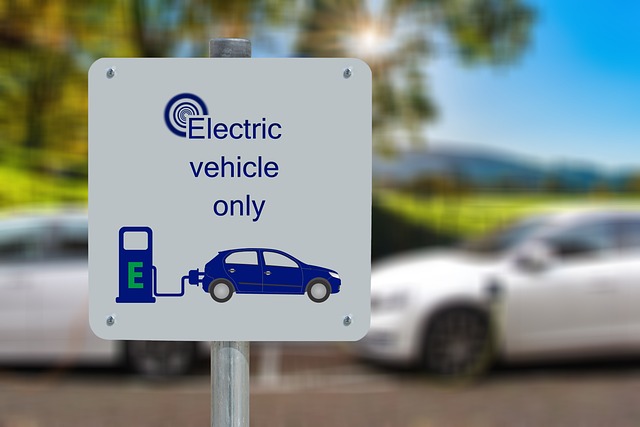From Volt to Value: Strategies for Investing in EV Charging Stations
The electric vehicle (EV) revolution is upon us, transforming not only the automotive industry but also creating new opportunities for investors. As governments and consumers increasingly shift towards sustainable transportation, the demand for EVs is skyrocketing. Consequently, the infrastructure to support these vehicles, particularly charging stations, has never been more critical. This article delves into the strategies for investing in EV charging stations, exploring market trends, technological advancements, regulatory landscapes, and key considerations for potential investors.
The Current State of the EV Charging Market
The global push towards decarbonization has led to an unprecedented rise in electric vehicle adoption. According to recent studies, the number of EVs on the road is expected to increase exponentially in the coming years, driven by factors such as government incentives, falling battery costs, and growing consumer awareness of environmental issues.
Currently, EV charging stations can be broadly categorized into three types: Level 1, Level 2, and DC fast chargers. Level 1 chargers are typically residential and require standard 120-volt outlets, making them suitable for home use but not ideal for public charging. Level 2 chargers, on the other hand, are widely used in public and commercial settings, offering faster charging capabilities at 240 volts. Lastly, DC fast chargers provide rapid charging at commercial locations, allowing consumers to recharge their vehicles in as little as 30 minutes.
Understanding Market Dynamics
The investment landscape for EV charging stations is influenced by several key factors. Understanding these dynamics is crucial for potential investors.
Government Initiatives and Incentives
Government policies and incentives play a significant role in shaping the EV charging market. Many countries have set ambitious targets for phasing out internal combustion engine vehicles, often accompanied by substantial incentives for EV buyers and investments in charging infrastructure. By staying informed about local, national, and international policies, investors can identify regions that are primed for growth in charging station deployment.
Technological Advancements
The evolution of charging technology significantly affects the viability and profitability of investments in EV charging stations. Advances in charging speed, interoperability, and payment systems are crucial to attracting more users. Investors should prioritize companies that are at the forefront of innovation in the charging space, as they are likely to capture larger market share and drive future growth.
Consumer Behavior and Adoption Rates
Consumer acceptance of electric vehicles directly impacts the demand for charging stations. As more individuals switch to EVs, the need for accessible and convenient charging solutions will grow. Market research and consumer sentiment analysis can provide insights into the factors driving EV adoption, enabling investors to make informed decisions about where to allocate their resources.
Investment Strategies for EV Charging Stations
Investing in EV charging stations involves various approaches that can be tailored to an individual’s risk tolerance and investment goals. Here are some strategic avenues to consider:
Direct Investment in Charging Infrastructure
Investing directly in the installation of EV charging stations is one of the most straightforward approaches. This could mean purchasing real estate and developing charging stations or partnering with existing locations, such as retail stores, parking lots, or highway rest stops, to install charging units. Investors should assess site viability based on location traffic patterns, proximity to population centers, and local government support.
Equity Investments in Charging Station Companies
Another strategy is to invest in established companies involved in EV charging infrastructure. Many publicly traded companies focus on manufacturing charging equipment, network services, or energy management solutions. By analyzing the financial health, growth potential, and innovation pipeline of these companies, investors can position themselves to benefit from the overall growth of the EV market.
Partnerships and Joint Ventures
Forming partnerships or joint ventures can reduce risk while increasing resource availability. Collaborating with technology firms, energy suppliers, or even municipalities can enhance project feasibility and open doors to innovative funding models. These strategic alliances can also enhance competitive advantages by pooling expertise and resources.
Assessing Franchising Opportunities
Franchising charging station networks may present a valuable investment avenue. With proven business models and brand recognition, established franchises can be less risky than starting something new. Investors can explore franchising opportunities to mitigate entry barriers while benefiting from established operational protocols and customer loyalty.
Evaluating Risks and Challenges
Like any investment, operating EV charging stations comes with inherent risks that investors must thoroughly evaluate.
Market Competition
The burgeoning demand for EV charging infrastructure has attracted numerous players, leading to market saturation in certain regions. Understanding local market dynamics and competitive positioning is crucial to devise strategies that differentiate one’s offerings from competitors.
Technological Compatibility and Standards
The rapid evolution of charging technologies can present compatibility challenges. Investors should account for the need to keep up with advancements, ensuring that their equipment remains relevant and user-friendly. Furthermore, compliance with evolving standards and regulations is paramount to avoid costly upgrades.
Regulatory and Compliance Risks
Investors must navigate an intricate web of regulations that can vary significantly by region. Zoning laws, grid capacity, and permitting processes can impact project timelines and costs. Engaging with legal and regulatory experts can help mitigate these risks and facilitate smoother project execution.
Economic Fluctuations
Like other industries, the EV charging market is susceptible to economic cycles. Economic downturns can impact consumer spending on EVs and, consequently, charging services. Investors should prepare for market fluctuations by diversifying their investment portfolios and planning for potential downturns.
The Future of EV Charging Stations
As the EV landscape continues to evolve, the future of EV charging stations looks promising. Emerging trends such as wireless charging technology, vehicle-to-grid (V2G) systems, and smart charging solutions are poised to reshape the industry. Investing in companies and technologies at the forefront of these trends may yield significant returns in the long run.
Conclusion
Investing in EV charging stations represents a unique opportunity to participate in the green transportation revolution. By understanding market dynamics, developing sound strategies, assessing risks, and keeping an eye on future trends, investors can position themselves to capitalize on this transformative shift in transportation. As electric vehicles become commonplace on roads worldwide, the charging infrastructure will be pivotal to supporting this transition, and investing in it could prove to be both profitable and beneficial for the planet.


